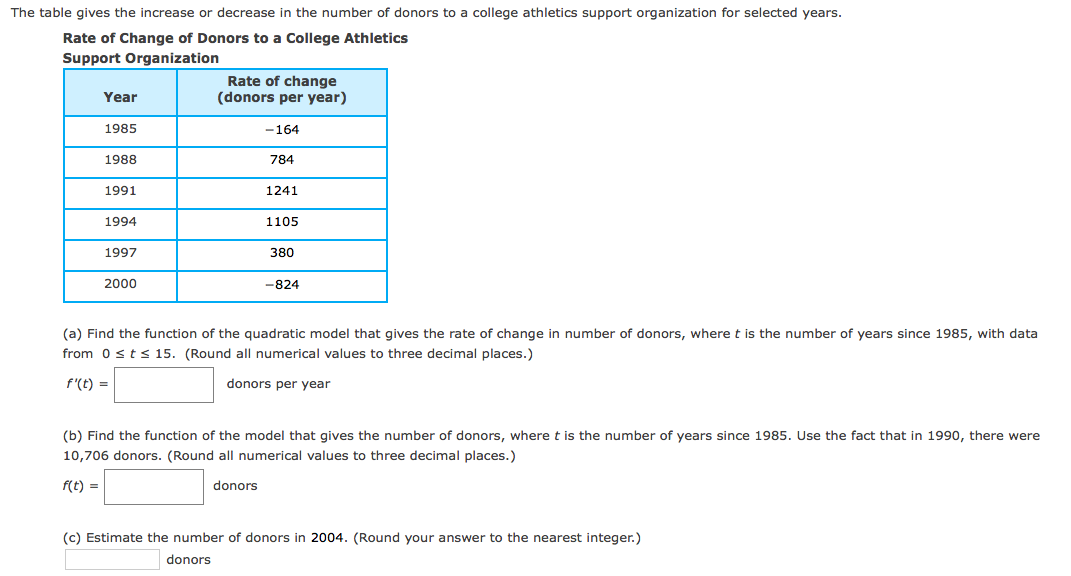The table gives the increase or decrease in the number of donors to a college athletics support organization for selected years. Rate of Change of Donors to a College Athletics Support Organization Rate of change (donors per year) Year 1985 -164 1988 784 1991 1241 1994 1105 1997 380 2000 -824 (a) Find the function of the quadratic model that gives the rate of change in number of donors, where t is the number of years since 1985, with data from 0sts 15. (Round all numerical values to three decimal places.) f'(t) = donors per year (b) Find the function of the model that gives the number of donors, where t is the number of years since 1985. Use the fact that in 1990, there were 10,706 donors. (Round all numerical values to three decimal places.) f(t) = donors (c) Estimate the number of donors in 2004. (Round your answer to the nearest integer.) donors
Minimization
In mathematics, traditional optimization problems are typically expressed in terms of minimization. When we talk about minimizing or maximizing a function, we refer to the maximum and minimum possible values of that function. This can be expressed in terms of global or local range. The definition of minimization in the thesaurus is the process of reducing something to a small amount, value, or position. Minimization (noun) is an instance of belittling or disparagement.
Maxima and Minima
The extreme points of a function are the maximum and the minimum points of the function. A maximum is attained when the function takes the maximum value and a minimum is attained when the function takes the minimum value.
Derivatives
A derivative means a change. Geometrically it can be represented as a line with some steepness. Imagine climbing a mountain which is very steep and 500 meters high. Is it easier to climb? Definitely not! Suppose walking on the road for 500 meters. Which one would be easier? Walking on the road would be much easier than climbing a mountain.
Concavity
In calculus, concavity is a descriptor of mathematics that tells about the shape of the graph. It is the parameter that helps to estimate the maximum and minimum value of any of the functions and the concave nature using the graphical method. We use the first derivative test and second derivative test to understand the concave behavior of the function.

Trending now
This is a popular solution!
Step by step
Solved in 4 steps with 1 images




